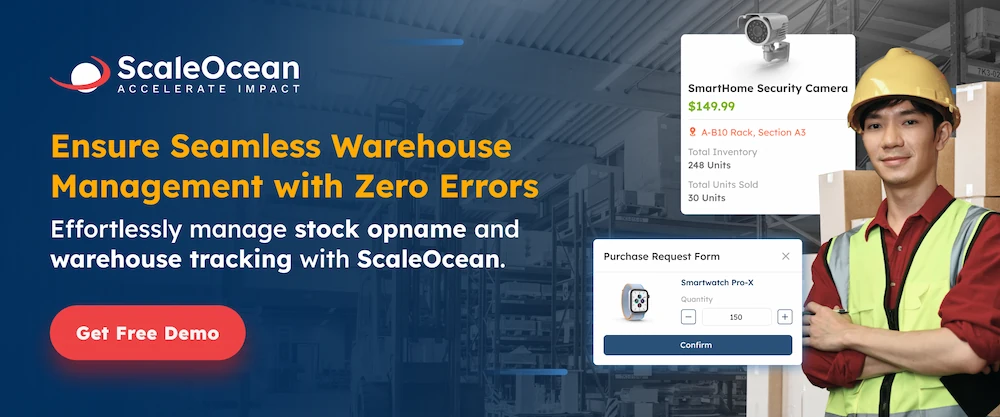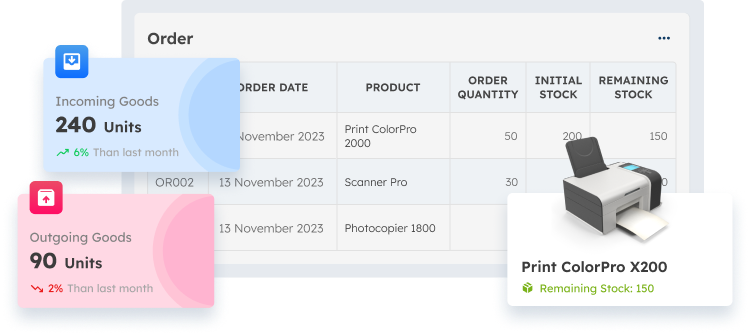In Singapore’s fast expanding logistics and e-commerce industries, efficient warehouse operations are vital to supply chain success. To remain competitive, firms must implement cutting-edge technologies that enable speedier order fulfillment and seamless operations. According to Grand View Research, the warehouse robots industry in Singapore is expected to reach USD 582.3 million by 2030, expanding at a compound annual growth rate (CAGR) of 21.8% between 2024 and 2030. This growth demonstrates the increasing reliance on automation in warehouse operations.
In this tutorial, we will look at how warehouse execution systems (WES) may dramatically improve warehouse management in Singapore. WES streamlines operations by optimizing task execution, resulting in faster and more efficient performance. Furthermore, WES improves resource allocation by ensuring that personnel, equipment, and inventories are used efficiently. These solutions also increase operational efficiency by reducing errors and downtime, resulting in smoother warehouse operations and improved overall supply chain performance.

1. What is a Warehouse Execution System?
A warehouse execution system (WES) is a sophisticated software solution that optimizes warehouse operations in real time by coordinating many areas of warehouse management. It acts as a bridge between a warehouse management system (WMS) and a warehouse control system (WCS), guaranteeing smooth communication and coordination of critical warehouse tasks like inventory monitoring, labor scheduling, and equipment use.
A WES improves operational efficiency by dynamically managing tasks, labor, and automation, so minimizing human errors, removing bottlenecks, and enhancing order fulfillment accuracy. It also allows warehouses to adapt to changing demand, implement automation techniques successfully, and improve overall supply chain agility. The end result is a more productive, cost-effective, and responsive warehouse operation that matches changing business requirements.
2. What Does a Warehouse Execution System Do?
A warehouse execution system automates warehouse processes by coordinating workers, equipment, and inventory in real time. It functions as an intelligent control center, constantly monitoring warehouse conditions and dynamically modifying operations based on real-time information. A WES guarantees that jobs are directed efficiently by analyzing criteria such as order priority, available resources, and equipment status, resulting in fewer delays and congestion in high-traffic warehouse locations.
For businesses that store goods in a bonded warehouse, a WES can also streamline the complex tasks associated with compliance, inventory tracking, and duty deferral, ensuring smooth operations. Furthermore, by automating resource allocation and optimizing task execution, it reduces idle time while increasing total productivity. This results in faster order processing, increased throughput, and less operational downtime, allowing warehouses to maximize asset utilization while maintaining excellent service standards.
3. Functionalities of a WES

A warehouse execution system (WES) provides a variety of features that help warehouses streamline operations, increase efficiency, and improve overall performance. These features enable seamless coordination of multiple warehouse processes, making operations more nimble and responsive to changing demands. The following are the major characteristics of a WES and how they help to warehouse optimization.
a. Task Management
A WES prioritizes and allocates jobs dynamically based on resource availability, inventory location, and order urgency. By automating task distribution, it reduces idle time while increasing productivity. Furthermore, it ensures that high-priority orders are completed first, while distributing burden among available resources. This proactive approach reduces bottlenecks and increases overall warehouse productivity.
b. Order Fulfillment Optimization
A WES ensures that the picking, packing, and shipping procedures are carried out as efficiently as possible by regulating order flow and sequence. This decreases lead time and increases client satisfaction. Furthermore, it reduces errors by guaranteeing that product is picked and packed correctly before shipment. The technology also allows for the priority of urgent orders, ensuring that high-demand items reach clients as soon as possible, hence enhancing service levels and operational reliability.
c. Resource Allocation
A warehouse execution system makes better use of people and machines by assigning jobs based on workload balance and demand changes. Integrating a warehouse barcoding system enhances this process by providing real-time tracking of inventory, ensuring more accurate task allocation. It uses real-time data and predictive analytics to establish the most optimal resource allocation, ensuring that all tasks are completed with minimal waste. This leads to increased production and lower operating expenses. Furthermore, by constantly altering personnel and machine usage in response to changing needs, it improves warehouse agility, allowing firms to retain maximum performance even during peak periods.
d. Real-time Visibility
A WES provides real-time data on warehouse operations, allowing managers to track inventory levels, task progress, and potential bottlenecks. It provides real-time warnings and reporting tools to discover inefficiencies before they affect operations. This improves decision-making and enables a quick response to disturbances. Furthermore, by employing data analytics, a WES may identify trends and recommend proactive changes to warehouse procedures, turning any work in progress into completed, resulting in increased efficiency and less downtime.
e. Integration Capabilities
A warehouse execution system works smoothly with WMS, WCS, and ERP software. This link guarantees end-to-end visibility and efficient information flow between systems. Businesses that synchronize these systems can improve operational efficiency and eliminate the need for manual interventions. Furthermore, this connectivity improves data accuracy, allowing for real-time tracking, better decision-making, and a faster response to market demands.
f. Intelligent Decision-Making
A WES uses modern algorithms and data analytics to make intelligent judgments that increase efficiency. It uses past data to estimate demand, optimize operations, and offer process changes. By evaluating real-time operational patterns, it enables proactive decision-making that reduces disruptions while increasing throughput. A WES can also discover inefficiencies and provide corrective steps, ensuring that warehouse operations are continuously optimized.
g. Exception Handling
A WES ensures smooth operations by spotting and responding to exceptions like inventory shortages or equipment faults. To mitigate disturbances, it sends out alerts and suggests alternative workflows. Furthermore, it continuously monitors warehouse conditions to anticipate possible failures, allowing for proactive problem remediation. This feature lowers downtime, improves overall efficiency, and ensures that operations continue even in the face of unforeseen obstacles.
h. Scalability and Flexibility
A WES enables warehouse expansion by reacting to changing business requirements. It ensures long-term operational efficiency by increasing automation, managing seasonal demand surges, and integrating new technology. Businesses that provide modular scalability can add new features as needed without interrupting existing procedures. It also delivers data-driven insights that enable warehouse managers to forecast future demand and make proactive operational modifications.

4. The Role of Automation in a Warehouse Execution System
Automation is critical for improving WES capabilities because it streamlines complicated warehouse operations and reduces reliance on manual labor. Warehouses can increase productivity and accuracy while keeping a consistent workflow by utilizing robotics, automated guided vehicles (AGVs), and conveyor systems. According to Globe Newswire, the e-commerce market in Singapore is expected to reach USD 10 billion by 2026, which will significantly influence the growing demand for warehouse automation to meet the needs of efficient order fulfillment.
A warehouse execution system coordinates automated procedures to ensure that human workers and robots operate together seamlessly. A WES can use advanced data analytics and machine learning to forecast operational bottlenecks, alter workflows in real time, and effectively distribute automated resources. This leads to fewer errors, faster order fulfillment, more efficient space usage, and a more robust warehouse operation capable of reacting to changing demand.
Also Read: What is Inventory Control? Optimizing Stock Management
5. WES vs. WMS
A warehouse execution system (WES) is dedicated to real-time operational execution, ensuring that warehouse activities run smoothly and efficiently, whereas a warehouse management system (WMS) is concerned with inventory management. A warehouse management system (WMS) primarily oversees inventory tracking, order processing, and reporting, offering visibility into stock levels and movements.
A WES, on the other hand, focuses on coordinating task execution, optimizing labor, and seamlessly integrating automation to enhance warehouse productivity. A WES improves warehouse performance by dynamically modifying workflows, efficiently allocating resources, and minimizing operational bottlenecks. Businesses searching for a comprehensive solution frequently benefit from integrating both systems since it allows for better synchronization between inventory control and execution, thus boosting overall supply chain management efficiency.
6. Enhance Warehouse Operations with ScaleOcean Warehouse Execution Software

ScaleOcean provides warehouse execution software that enables enterprises to improve warehouse productivity and operational accuracy. This solution offers faster and more accurate order processing by including advanced features like automated task management, seamless system integration, and real-time data analytics. Companies can use ScaleOcean to optimize resource allocation, increase operational visibility, and minimize total expenses.
ScaleOcean’s warehouse execution software enables you to maximize the potential of your warehouse operations. Experience a game-changing solution that improves productivity, streamlines workflows, and eliminates bottlenecks. Take advantage of our free demo to see firsthand how ScaleOcean can streamline your operations, boost productivity, and provide real-time actionable insights targeted to your company’s needs. And Why Choose ScaleOcean Warehouse Execution Software?
- Unlimited Users Without Additional Cost, Enjoy 100% unlimited users at no extra charge, allowing you to scale your business without restrictions.
- All-in-One Solution with Complete Modules, Access 200+ industry-specific modules and over 1,000 feature options tailored to your business requirements.
- Transparent and Fixed Pricing, Benefit from a flat-rate pricing model with no hidden costs, ideal for medium to large enterprises.
- Customizable to Fit Your Business Needs, Personalize the software with dashboard customization and Advanced Smart Configuration for each department.
- Seamless Multi-Branch Integration, Connect multiple subsidiaries or business branches within a single platform, ensuring smooth operations across locations.
7. Conclusion
A warehouse execution system is an essential tool for modern warehouses that want to increase efficiency, accuracy, and embrace automation. A WES improves warehouse operations by optimizing job management, expediting order fulfillment, and ensuring efficient resource allocation. Integrating it with automation and WMS systems increases its impact, making it an essential component of competitive supply chain management.
Businesses that invest in modern WES can improve operational management, lower costs, and generate long-term growth. ScaleOcean’s free demo allows you to fully explore the capabilities of a warehouse execution system. Discover how our intelligent software can transform your warehouse operations, increase efficiency, and deliver real-time visibility into your logistics. Don’t pass up this opportunity to improve your business efficiency—schedule your demo today!







 PTE LTD..png)
.png)

.png)








.png)
.png)
















